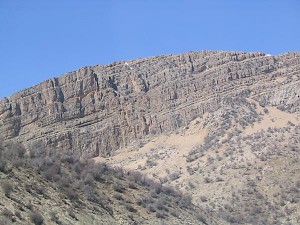Paišiyâuvâdâ
Paišiyâuvâdâ: the town where a Magian named Gaumâta raised a rebellion against the Achaemenid king Cambyses (Spring 522 BCE).

According to the Behistun Inscription, Paišiyâuvâdâ was close to "the mountain named Arakadriš".note These places cannot be located with certainty, but since the town has a different name in the Elamite version of the inscription (Nasirma), we may assume that it was on the border between Elam and Persia. (If it had been a purely Persian town, it would have kept its Persian name in the translation.) We can therefore think of a part of the southern Zagros mountain range.
The Behistun Inscription says that Paišiyâuvâdâ was the place where the Magian named Gaumâta raised a rebellion against the Achaemenid king Cambyses, who was in Egypt or Syria. This is remarkable, because other rebels mentioned in the inscription are never introduced with an indication of the place of their revolt.
A possible explanation is that in the Zoroastrian cosmology, the earth was created by Ahuramazda with a perfect, level surface; mountains were believed to be the result of the countercreation by the supreme god's opponent, Angra Mainyu ("the hostile spirit").note The fact that Gaumâta started his revolt on a mountain was, in this view, proof of his wickedness, and something worth recording.
Literature
Bruce Lincoln, Religion, Empire, and Torture. The Case of Achaemenian Persia (2007) pp.58-61